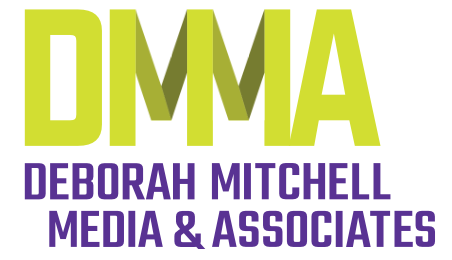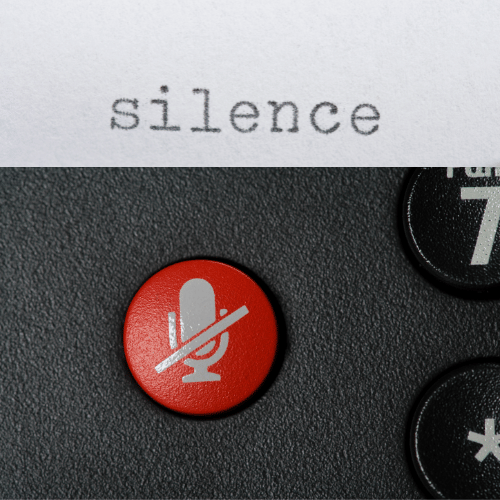When Your Client Goes Radio Silent: 4 Steps to Re-Engage and Recover Overdue Payments
Securing timely payments is essential to maintaining a sustainable business in the world of business, including digital marketing, video production, and creative services. Yet, every entrepreneur has likely encountered a client who suddenly stops responding—whether it’s about pending deliverables, approvals, or, worst of all, overdue invoices.
When a client goes radio silent, you’re left wondering: Is this just a delay, or am I about to take a financial hit? While some situations may be unavoidable (as seen in fellow entrepreneur Maria Bailey’s $150K lesson), there are proactive steps you can take to recover overdue payments and preserve your working relationships. I admit, I have been in this situation where a client just “disappeared,” and I am wondering, “What is going on?” Remember, it is important to keep communication open. Here are the top four strategies to get your client talking again.
Give Them the Benefit of the Doubt – At First
Action Step:
Send a follow-up email with a subject line like “Following up on Invoice #12345 – Payment Reminder” or “Let’s Look At Next Steps For Our Working Relationship.” Keep the message concise, professional, and solution-focused, offering to hop on a quick call if needed.
If your email is ignored, escalate to phone calls, LinkedIn messages, or even reach out to another contact within the company. Keep records of all communications—you might need them later.
Create Urgency with a Formal Payment Notice
If your initial follow-ups go unanswered, it’s time to escalate tactfully. A formal payment demand letter—also called a Notice of Outstanding Payment—adds legal weight to your request.
Pro Tip: Clients often respond when they see an official-sounding message. Using legal language (without threatening legal action just yet) can make them take you more seriously.
Action Step:
Send a professional email stating:
✔ The amount due and the original due date
✔ A clear deadline for payment (e.g., “Payment must be received within 7 business days to avoid additional late fees”)
✔ Any late fees or interest outlined in your contract
If necessary, use a subject line like “Urgent: Overdue Invoice – Immediate Attention Required” to ensure visibility.
Offer a Payment Plan or Alternative Solution
Sometimes, clients fail to pay because they’re genuinely struggling. If they respond with financial hardship claims, consider negotiating—but only if it’s beneficial for your business.
Action Step:
✔ Offer a payment plan: “Would it be helpful to break this into two payments?”
✔ Trade service adjustments: If they can’t pay in full, propose a partial payment in exchange for pausing future work.
✔ Discount for immediate payment: Some clients will clear invoices quickly if you offer a small incentive (e.g., 5% off for payment within 48 hours).
Consider Legal Options – But Be Strategic
If all else fails, escalate strategically. Depending on the amount owed, small claims court, collections agencies, or even public exposure (if appropriate) may be necessary.
Action Step:
✔ Send a final warning: Make it clear that legal action is next.
✔ Leverage public platforms: A polite but firm comment on LinkedIn can sometimes get results.
✔ Consult a lawyer: If the amount is significant, legal advice may be the best route.
BONUS: How to Re-Engage a Client Who Stops Responding Mid-Project
Step 1: Identify Possible Reasons for Silence
Clients stop responding for various reasons, including:
- Internal business changes (staff turnover, restructuring)
- Budget constraints (but they don’t want to tell you)
- Decision fatigue (they’re overwhelmed with other priorities)
- Disorganization or simple forgetfulness
Knowing why they might be unresponsive will help you tailor your re-engagement approach.
Step 2: Change the Communication Method
If your emails are being ignored, switch it up.
✔ Send a quick text or direct message: A simple “Hey [Name], just checking in—want to make sure we’re still on track for [project milestone]. Let me know how I can help!” keeps it light and pressure-free.
✔ Use a subject line that sparks action: Instead of “Checking in,” try “Next Steps Needed for [Project Name]” or “Quick Approval Request – Avoid Delays” to make it clear action is required.
✔ Leverage their assistant or team members: If they have a gatekeeper, reach out to them with a friendly but firm request for an update.
Step 3: Set a Deadline for Action
If the silence continues, you need to create urgency without being aggressive.
Example Email:
Subject: Project Status – Action Needed by [Date]
Hi [Client’s Name],
I hope all is well! I wanted to check in on [Project Name] as we’re waiting on [specific item needed] to proceed. In order to keep things on schedule, I’ll need your feedback by [date].
If you need more time, just let me know so we can adjust accordingly. Looking forward to your thoughts!
Best,
[Your Name]
This keeps it professional but firm—it reminds them of the timeline while offering flexibility.
Step 4: Pause Work (If Necessary) and Protect Your Time
If a client continues to ghost you despite multiple attempts, set clear boundaries.
✔ Pause all work until they respond—don’t continue sinking time into a stalled project.
✔ Refer back to contract terms: If your agreement includes a clause about work stoppages due to non-responsiveness, reinforce it in your next email.
✔ Decide when to cut your losses: If a client has disappeared for weeks or months, it might be time to formally end the engagement and move on.
Prevention Is Key
To avoid finding yourself in this situation again:
✅ Use strong contracts with clear response deadlines
✅ Request upfront deposits or milestone-based payments
✅ Vet clients carefully—especially larger corporations
Every business owner faces the risk of non-payment or unresponsive clients at some point. The key is acting swiftly and professionally—because the longer you wait, the harder it becomes to recover your money and time.
Have you ever dealt with a silent client? What strategies have worked for you? Let us know in the comments!
Read Maria Bailey’s full story on her Facebook post HERE.













